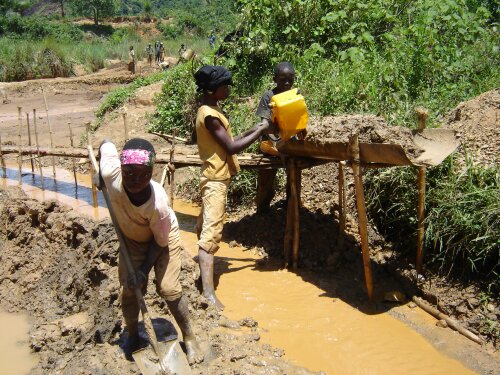Informining: The Informalization of Global Gold Production?
This project seeks to understand structural trends in the global gold production system. It combines an analysis of macro-level changes in global gold production (global expansion, informalization, technological innovation) with empirical case studies of gold mining areas in Peru, the Democratic Republic of Congo, and the Philippines.

The typical image of gold mining conveys an image of a dual mining economy that is divided between industrial mining undertaken by large (multinational) enterprises, and an artisanal and small-scale gold mining (ASGM) sector that is the domain of impoverished communities.
However, this view is increasingly out of tune with realities on the ground, where we find increased diversity (in terms of mining activities), connectivity (between these activities), and informality (in industrial mining and in ASGM). To account for these realities, this project moves beyond dualist views, by analyzing gold mining through the prism of a global gold production system that integrates all gold mining-, processing-, and trading activities; large and small, formal and informal. Specifically, the project combines two lines of inquiry:
- An analysis of structural change in global gold production, which has expanded outside of its historical core (global expansion), mobilizes cheap and flexible informal labor (informalization), and integrates innovation in all stages of the gold production cycle (technological innovation).
- An analysis of how the global gold production system 'touches ground' in particular locations (in Peru, the DRC, and the Philippines), where it affects the lives of the millions of people involved in gold mining.